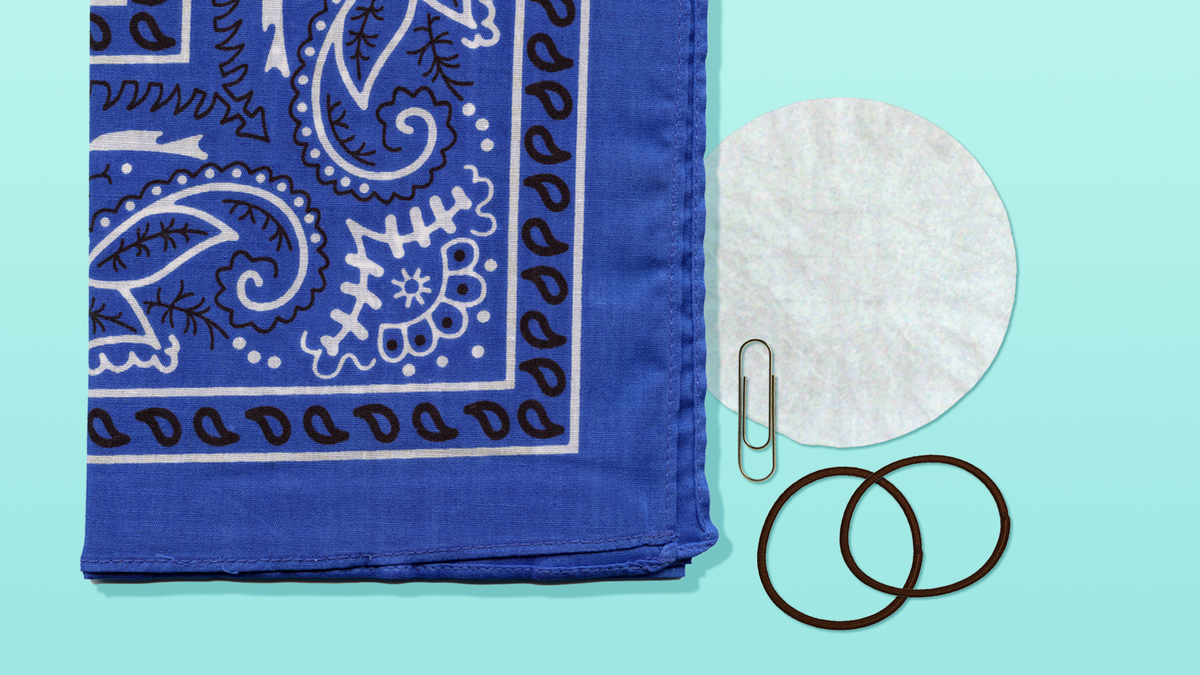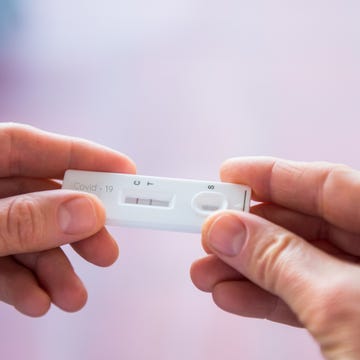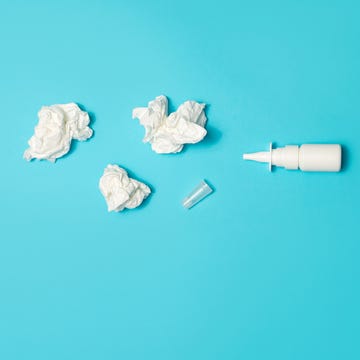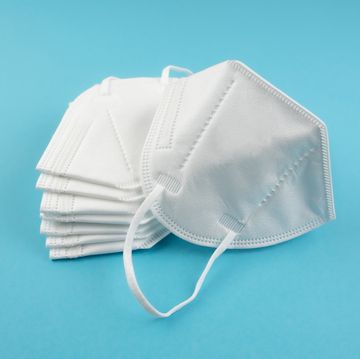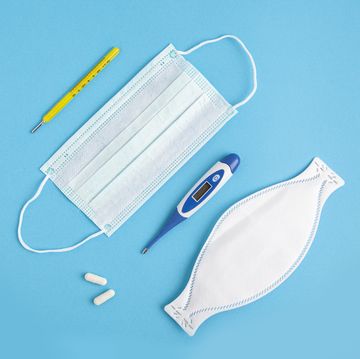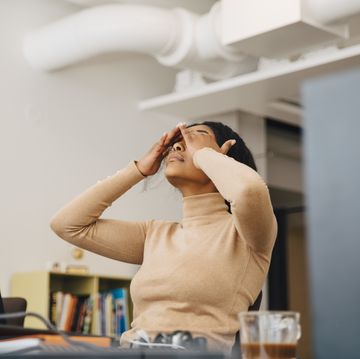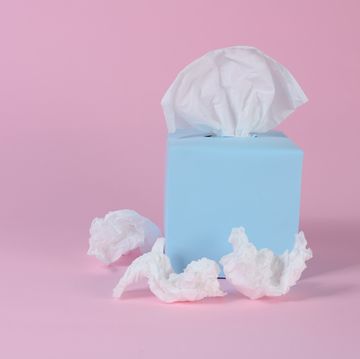As more information about the coronavirus pandemic develops, some of the information in this story may have changed since it was last updated. For the most up-to-date information on COVID-19, please visit the online resources provided by the CDC, WHO, and your local public health department.
Homemade face masks have now become essential items during the COVID-19 pandemic, after the CDC recently changed its guidelines to say that everyone should wear some form of a cloth face covering in public places. If buying a mask or sewing one isn't ideal for you, it's surprisingly easy to make a DIY face mask with materials you already have at home.
Keep in mind: just because you're supposed keep your face covered doesn't mean you should go on the hunt for hospital-approved N-95 respirators. These are not recommended for anyone other than healthcare professionals working directly with coronavirus patients. Hospitals are in dire need of these types of masks, so it's best to save the N-95 ones for them. Homemade versions are still a great choice and can be more comfortable and effective than simply tying a bandana or scarf around your face.
Do fabric face masks really protect you from coronavirus?
The CDC has reported that wearing face masks can help slow the spread of COVID-19. But it's not as simple as it sounds and it works best if they're worn by everyone in places where social distancing is difficult, like grocery stores and pharmacies.
The real reason the CDC recommends covering your face in public is because people can have no symptoms and still be COVID-19 positive without realizing it. As a result they can spread the novel coronavirus by coughing, sneezing, or even just speaking around others. Wearing the masks can help prevent the transmission of the virus from people that are contagious without knowing it.
Just remember that fabric face masks are not as effective as CDC-approved ones like surgical masks or N-95 respirators. You should still practice social distancing by staying at home as much as possible and follow other recommendations, like the six-foot rule to keep space between yourself and others.
Which fabric is best for a face mask?
The best fabric for a homemade face mask is tightly woven, 100% cotton. You can use a bandana or fabric from pillowcases, curtains, woven shirts, or anything else you might have in your home. You can also use a T-shirt, but it's not our top choice because the fabric is knit (i.e. it can create holes when it stretches).
You'll also need something to keep the mask snug on your face. You can use hair ties or rubber bands to secure them on your ears, but shoelaces, string or ribbon that you can tie around the back of your head may feel more comfortable.
To make the mask even more protective, you can use a coffee filter inside to help block particles. You can also add a metal piece (like a paper clip or twist tie from a bag of bread) to help it fit more securely around your nose.
Some seamstresses have found that shop towels (normally used by auto-mechanics) can filter particles better than other at-home face mask materials. At this point, these haven't been tested by medical labs and aren't yet recommended by the CDC, so for the sake of personal-use masks, you can stick with the materials you already have at home.
How to make a DIY face mask without a sewing machine:
We consulted Amanda Perna, Project Runway alum and fashion designer behind House of Perna, who has been donating homemade face masks to hospitals after having to close her studio during the coronavirus outbreak. Here is Amanda's quick and easy tutorial for making a no-sew face mask at home without having to buy new supplies:
- Lay out a bandana or cut a 22"x 22" square of cotton fabric
- Place a flat coffee filter in the center of the square (optional)
- Fold the top and bottom in towards the center
- Place a twist tie, paper clip, or other metal piece close to the top (optional)
- Fold the top and bottom in towards the center
- Fold the sides in towards the center, placing your ties at the folded crease. If you're using rubber bands or hair ties, loop these around the fabric. If you're using shoelaces or string, place the center of the string in the folded crease and pull the straps tight
- Tuck one end of the fabric into the other
- Lift the mask to your face and secure the straps. For hair ties and rubber bands, loop them over each ear. For shoelaces and string, tie them behind your head
- Adjust as needed, making sure your mouth and nose are completely covered
Check out the video above of Amanda's step-by-step instructions in action.
Lexie Sachs (she/her) is the executive director of strategy and operations at the Good Housekeeping Institute and a lead reviewer of products in the bedding, travel, lifestyle, home furnishings and apparel spaces. She has over 15 years of experience in the consumer products industry and a degree in fiber science from Cornell University. Lexie serves as an expert source both within Good Housekeeping and other media outlets, regularly appearing on national broadcast TV segments. Prior to joining GH in 2013, Lexie worked in merchandising and product development in the fashion and home industries.
